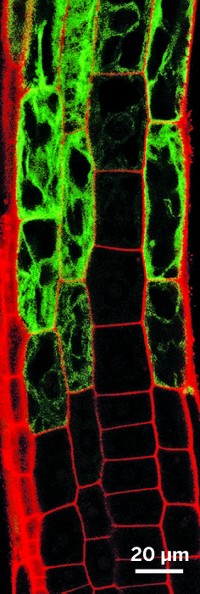Advertisement
Grab your lab coat. Let's get started
Welcome!
Welcome!
Create an account below to get 6 C&EN articles per month, receive newsletters and more - all free.
It seems this is your first time logging in online. Please enter the following information to continue.
As an ACS member you automatically get access to this site. All we need is few more details to create your reading experience.
Not you? Sign in with a different account.
Not you? Sign in with a different account.
ERROR 1
ERROR 1
ERROR 2
ERROR 2
ERROR 2
ERROR 2
ERROR 2
Password and Confirm password must match.
If you have an ACS member number, please enter it here so we can link this account to your membership. (optional)
ERROR 2
ACS values your privacy. By submitting your information, you are gaining access to C&EN and subscribing to our weekly newsletter. We use the information you provide to make your reading experience better, and we will never sell your data to third party members.
Biological Chemistry
Sequestering A Key Plant Hormone
Molecular Biology: Newly discovered family of protein transporters controls auxin levels in plant cells
by Sarah Everts
April 18, 2012

Researchers have long known that the plant hormone auxin, or indole-3-acetic acid, regulates a broad range of biological functions, including flowering, fruit ripening, and root elongation. But they didn’t realize the sophistication and complexity with which plants coordinate the levels and location of this potent hormone in cells, says Jürgen Kleine-Vehn, a plant biologist at University of Natural Resources & Life Sciences, in Vienna.
Kleine-Vehn and his colleagues have discovered a new family of proteins that fine-tunes levels and location of auxin in plant cells by reversibly sequestering it inside the endoplasmic reticulum (Nature, DOI: 10.1038/nature11001). In addition to clarifying the biology of an important plant hormone, the work may eventually enable scientists to use the newly discovered transporters to control growth of agricultural crops.
Kleine-Vehn’s team guessed that plants might have a previously unrecognized level of regulation for auxin. They used bioinformatics to search the genome of the flowering plant Arabidopsis thaliana for proteins capable of binding auxin or auxin derivatives and discovered what they call the PILS family of seven genes. Then they looked in plant cells for locations where PILS proteins are expressed and discovered them embedded in the endoplasmic reticulum.
The PILS transport proteins help control levels of the auxin indole-3-acetic acid in the plant cell’s cytosol without degrading the valuable hormone. Each of the seven different transporters is expressed to control different aspects of auxin-related plant biology, from stem growth to root branching.
“Auxin is so critical to plant development,” comments Mark Estelle, a plant biologist at the University of California, San Diego. “But until now we’ve known almost nothing about where auxin is in a plant cell. It’s really exciting” to now learn where it’s found, he says.






Join the conversation
Contact the reporter
Submit a Letter to the Editor for publication
Engage with us on Twitter